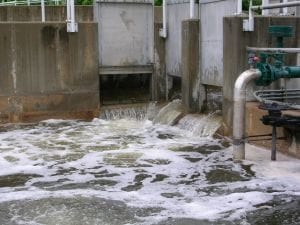“Every opportunity must be taken to maximize the recycling and re-use of wastewater for other purposes at or close to the point where the wastewater is generated, and these principles must be incorporated in to water resource management plans for all land use activities. This will reduce the quantity of effluent that is discharged directly into the aquatic systems in the Upper Olifants catchment and help to reduce eutrophication and contamination of these aquatic systems.”
This was one of the key actionable findings when the CSIR in late February hosted the Upper Olifants River Study Key Stakeholder Workshop to present technical research outputs relevant to remediation and restoration of the Upper Olifants River catchment, to discuss possible solutions to the problems of pollution in the catchment and to strengthen relationships between various stakeholders in the catchment. The workshop participants included representatives from national government, provincial government, local government, mining, industry, agriculture, conservation and research. The workshop yielded some interesting discussions and suggestions for a way forward on improving the state of the catchment. The CSIR is currently concluding a multidisciplinary investigation into the causes and impacts of the pollution in the Upper Olifants River catchment. Pollution streams identified The study – which was initiated in 2009 – identifed three main sources of pollution that have an impact on the quality of the Upper Olifants River and its tributaries, namely: the acidification of parts of the system and inputs of metal ions and sulphates via acid mine drainage; industrial effluent containing a variety of potential pollutants and genotoxicants; excessively high nutrient inputs from wastewater treatment works and agriculture, and microbial pollution from wastewater treatment works. According to a statement by the CSIR, these pollutants result in widespread eutrophication (nutrient enrichment) of the river, increased potential for bioaccumulation of metals, and human health effects related to microbial pollution. The next step involved pin-pointing the exact sources of pollution and the impact of this pollution on the health of the aquatic ecosystem. From this research, recommendations were made regarding rehabilitation options for the catchment and how to improve its overall state.The final focus of the study was on the completion of tasks related to quantifying land use impacts on water quality and related ecosystem health effects; remediation and mitigation options; and the communication of the findings of the project to key stakeholders and water resource managers. A stakeholder engagement process ran parallel to the technical research track of the project. The stakeholder engagement process was aimed at identifying the information needs of key stakeholders in the Upper Olifants Catchment and linking these information gaps with relevant technical research outputs.
Recommendations tabled
The workshop itself served to highlight recommendations and actions to be taken in the remediation and restoration of the Upper Olifants River catchment. According to Dr Paul Oberholster, a freshwater scientist at the CSIR and project leader of the study, intervention strategies begin from understanding four key points, namely:
- The process of cultural eutrophication is reversible, though it may take time to achieve and requires medium to large investments;
- There are no ‘quick fixes, one-size-fits-all’ solutions. The problems require well-planned and long-term implementation strategies;
- The issues require a collaborative approach between government’s Department of Water Affairs and Department of Mineral Resources, water resource managers, business and communities. However, government must play the leading role in directing efforts and evaluating success or failure;
- The issues cannot be solved by a single, short-term technical intervention. Solving the problems will require the implementation of a suite of social, economic and technical interventions.








